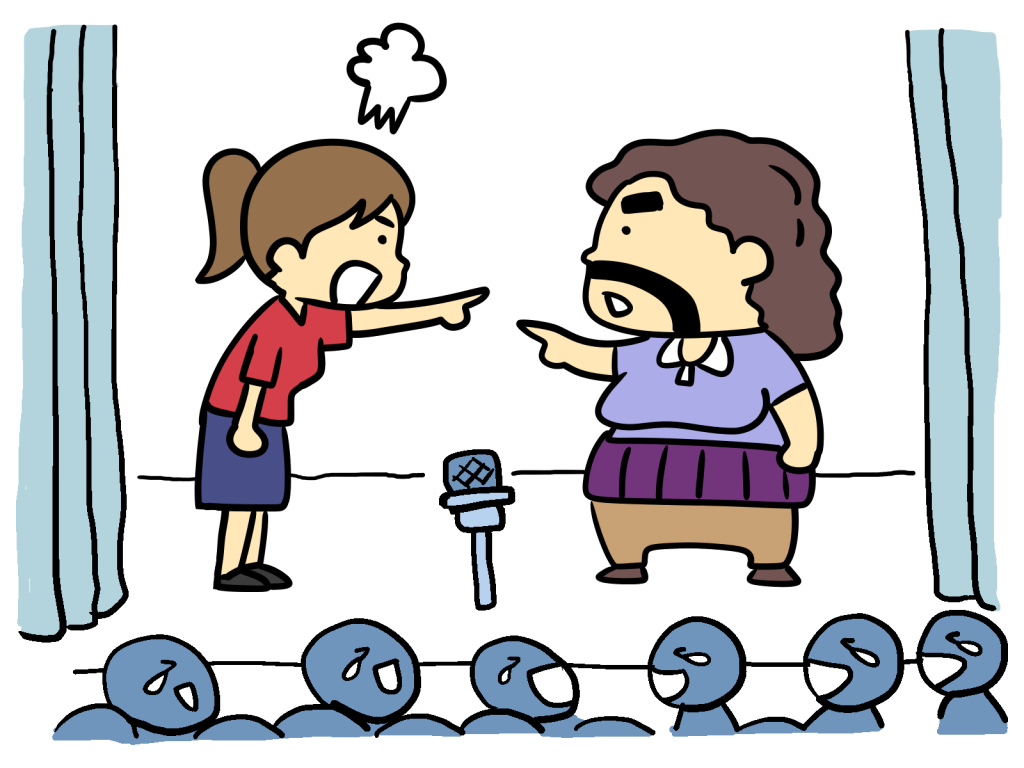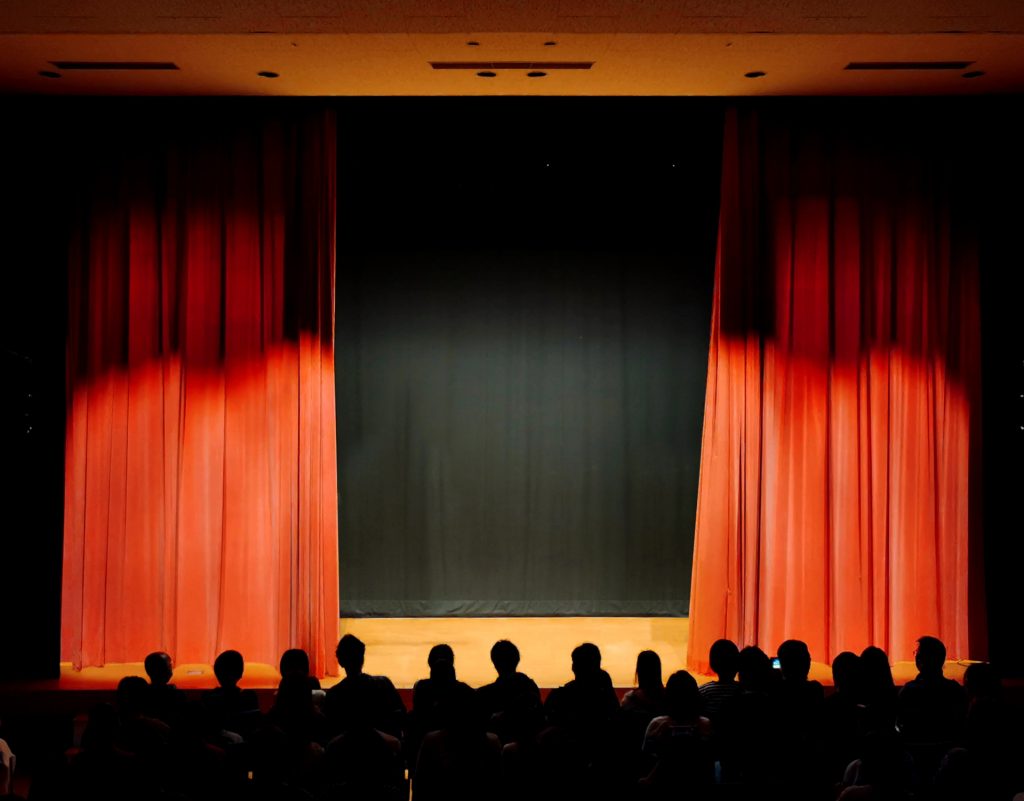“Why do people laugh?” One of the answers to this question might be conte. Through short performances filled with humor and creativity, conte draws audiences into its unique world of storytelling. Unlike manzai, which focuses on verbal exchanges, conte offers unique acting and storylines that have always fascinated people across generations. This article will introduce the history, evolution, and modern ways to enjoy conte!
What Is Conte, Exactly?

Let’s start by explaining “What is conte?” Conte derives from the French word “conte,” which means “short story.” This form of entertainment was brought to Japan from France and was later incorporated into Japanese theater and comedy, evolving into what we now know as conte.
What’s the Difference Between Manzai and Conte?
A common question people ask is, “What’s the difference between manzai and conte?” Here’s a breakdown of their characteristics:
- Manzai: A form of comedy based on scripts, where performers rely on quick verbal exchanges to make people laugh.
- Conte: A short performance that emphasizes acting, character roles, props, and settings.
While manzai relies primarily on verbal exchanges, conte is storytelling-oriented and closer in style to theatrics.

The History of Conte in Japan
Post-war Japan saw the rise of conte as entertainment, starting as a short theatrical performance and gradually becoming recognized as a popular comedy genre through its dissemination on television. The history of conte in Japan can be summarized in these stages:
The Rise of Television and Public Popularity (1950s–)
In the 1950s, the rapid rise of television allowed performances traditionally shared in theaters to reach audiences at home. During this time, comedic shows on television became increasingly popular.
The “Owarai Sannin-gumi” (“Comedy Trio”), which aired in 1958 on NHK, was said to be a symbol of family-oriented variety shows, introducing sketches styled like short dramas to entertain audiences. The sketch-focused performances on this show are widely credited with popularizing the conte format in Japanese households.
The Golden Age of Conte (1970s–1980s)
During the 1970s and 1980s, conte reached its peak in popularity thanks to television-focused comedy:
- “8 o’clock! All Together”: Presented by The Drifters, this TV show won over audiences of all ages with its extravagant sets, over-the-top physical comedy, and full-body acting.
- Yoshimoto Shinkigeki: Based in Osaka, this comedic series became a staple of humor for its situational skits and recognizable cast of characters, cementing conte as essential entertainment in Japan.
Modern Era: Conte in the Internet Age
From the 2000s onward, conte, which was primarily centered on television, expanded its stage to the internet. With the introduction of “King of Conte” (since 2008), opportunities for young comedians to showcase their unique styles have increased. In addition, new formats such as short conte and content utilizing video-sharing websites have also gained popularity.
The Appeal of Conte Today

Conte has continued to evolve over the years and still captivates a broader audience. Its appeal consists of the following characteristics:
- Diverse and Accessible Across Various Platforms
One of the key appeals of conte is its availability on platforms such as TV, theaters, and YouTube. The recent surge of short conte performance videos by young comedians on social media has also brought wider recognition to the art form. - A Wide Range of Genres
Conte embraces a versatile range of comedic styles, from absurd “surreal” genres to heartwarming story-driven themes.
How to Enjoy Conte
There are several ways to enjoy conte—live performances, televised programs, or online content.
Watch Conte Live
Experiencing conte at live venues lets you enjoy the energy of the performance up close:
- Lumine the Yoshimoto (Tokyo): A stage known for professional conte and comedy.
- Namba Grand Kagetsu (NGK) (Osaka): The home base for shows like Yoshimoto Shinkigeki.
Watch Conte on TV and YouTube
Conte is accessible through TV comedy specials and online platforms. Many great performers offer a rich trove of sketches for free.
- Join competitions like King of Conte, or jump into the comedy of YouTube with daily shorts like JARUJARU TOWER!
Try Writing Conte Yourself!
Conte isn’t just for watching—you can easily try your hand at writing and performing it yourself! Pick a relatable “everyday topic” for inspiration and collaborate with your friends to turn it into a memorable, humorous sketch.
Global Recognition: Japanese Conte’s Unique Appeal
Conte isn’t just limited to Japan. Several Japanese-style sketches have gained international acclaim, proving humor knows no borders.
Comedy Highlights in the Global Scene
- “Misunderstanding Sketches” by ANJASHU
Known for their miscommunication-based comedy, Anjashu’s sketches use universal humor to transcend language barriers. The escalating misunderstandings and surprising punchlines have earned them global fanfare. - The Drifters’ Timeless Physical Comedy
The Drifters’ slapstick comedy and exaggerated reactions resonate with audiences worldwide. Overseas, they’re often compared to classics like Charlie Chaplin. - Jinrai Tomonori’s One-Man Shows
Blending projected images with one-man performances, Jinrai produces innovative sketches. His work often features surreal humor, recognized internationally through reaction videos online.
A Timeless Form of Entertainment
Conte’s enduring charm lies in its ability to adapt to each generation’s tastes while staying accessible and diverse. Whether enjoyed through live performances, TV specials, or digital platforms, conte remains a creative way to experience humor. Explore its unique style and find the conte experience that’s just right for you!














